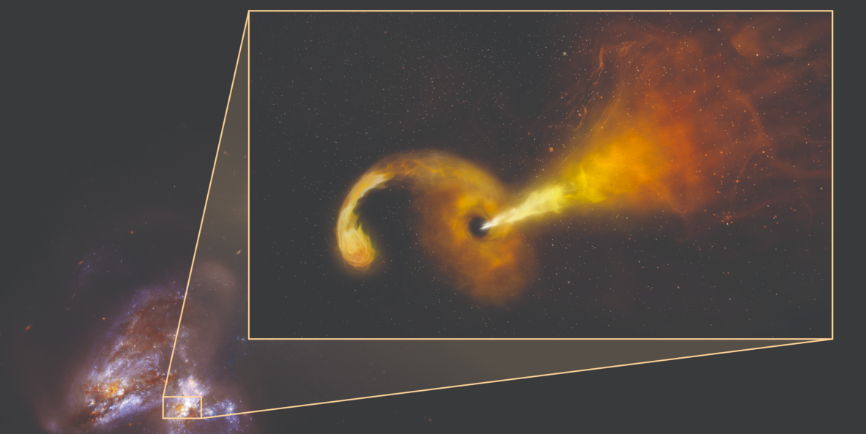Scientists See Black Hole Destroying a Star

For the first time, astronomers have witnessed the aftermath of a black hole destroying a star.
Using radio and infrared telescopes, including the National Science Foundation's Very Long Baseline Array (VLBA), an international group of scientists studied a pair of colliding galaxies. Together the two galaxies are known as Arp 299 and are close to 150 million light-years from Earth. Like most galaxies, the two that make up Arp 299 have supermassive black holes at their centers.
One of them, a black hole 20 million times larger than the sun, tore apart a star twice the size of the sun. This act of awesome destruction, known as a tidal disruption event (TDE), set off a chain of events that allowed for scientists to capture crucial details.
On January 30, 2005, astronomers using the William Herschel Telescope in the Canary Islands found a burst of infrared emission coming from the nucleus of one of the Arp 299 galaxies. Later that year, the VLBA revealed a new, distinct source of radio emission from the same location.
“As time passed, the new object stayed bright at infrared and radio wavelengths, but not in visible light and X-rays. The most likely explanation is that thick interstellar gas and dust near the galaxy’s center absorbed the X-rays and visible light, then re-radiated it as infrared,” says Seppo Mattila, of the University of Turku in Finland in a press statement.
A variety of telescopes began to follow the Arp event, including the Nordic Optical Telescope on the Canary Islands and NASA’s Spitzer space telescope, which is also used to study exoplanets. Observations over the next decade found the source of the radio emission expanding in only one direction, as would be expected for a black hole.
The gravity inside a black hole is so strong that matter, in essence, forms a line around the phenomena waiting to get devoured. The material forms a rotating disk around the black hole, and incredible jets of particles are blasted outward.
At first, scientists thought the jet they were witnessing might be a star going supernova as opposed to being destroyed. But in 2011, six years after initial discovery, the jet was still growing. That's when scientists began to understand that they might be dealing with a jet of particles from a destroyed star.
“Much of the time, however, supermassive black holes are not actively devouring anything, so they are in a quiet state. Tidal disruption events can provide us with a unique opportunity to advance our understanding of the formation and evolution of jets in the vicinities of these powerful objects," says Miguel Perez-Torres, of the Astrophysical Institute of Andalusia in Granada, Spain.
"Because of the dust that absorbed any visible light, this particular tidal disruption event may be just the tip of the iceberg of what until now has been a hidden population. By looking for these events with infrared and radio telescopes, we may be able to discover many more, and learn from them,” Mattila says.
While black holes do spend a lot of time in their quiet states, their ability to consume presses the limits of human understanding. The fastest growing supermassive black hole known to exist, for example, could devour the Sun in two days.
Source: National Radio Astronomy Observatory
You Might Also Like

